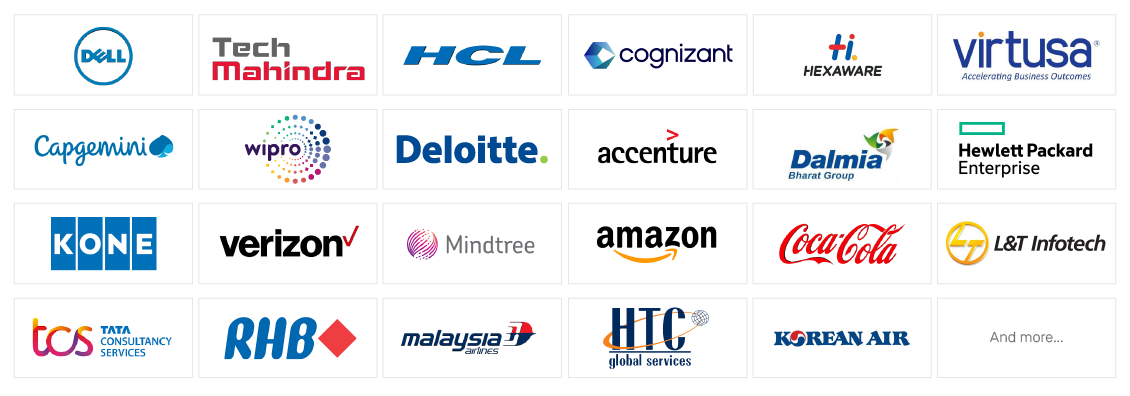Certificate Course on Data Analytics
In Collaboration with

Data Analytics course empowers you with all the needed skills and trends to lead the changing world. Showcase your Data Analytics skills and make yourself hireable by the top employers.
96%
of participants who met the conditions got placed
98%
Program Satisfaction
98%
Program Completion Rate
Tools Covered

Certificate from Industry Leaders
.png)
In terms of providing cognitive approaches and consulting services, SUNY is a pioneer.
SUNY invests $6 billion yearly in development and research and has long-standing expertise in data sciences and artificial intelligence.
The goal of 360DigiTMG's partnership with SUNY is to help introduce learners in order integrated blended educational experiences with the aid of our well designed, globally recognised curriculum.
.png)
Specialist trainers – highly experienced industry experts and professors from premier engineering and B-schools.
Reputed institute – carries a legacy of training 20,000+ professionals and 10,000+ students from across the globe.
Certifications demonstrate your commitment to the profession and motivation to learn. Instill employer’s confidence in you and catch the attention of recruiters with these certificates.
Data Analytics Course Fee in India
Classroom
Training
- Classroom Training in Hyderabad, Bangalore, Chennai and Pune
- Seats are filling up fast
- Avail Monthly EMI At Zero Interest Rate
- Lifetime validity for LMS access
- 20+ live hours of industry Master classes from leading academicians and faculty from FT top 20 universities
- Career support services
Virtual Instructor-led Training (VILT)
- Live online classes - weekends & weekdays
- 365 days of access to online classes
- Avail Monthly EMI At Zero Interest Rate
- Lifetime validity for LMS access
- 20+ live hours of industry Master classes from leading academicians and faculty from FT top 20 universities
- Career support services
Data Analytics Certification Training
360DigiTMG offers the best Data Analytics certification courses in India. The training program equips you with an apt understanding of data processing tools like Excel, SQL/NoSQL, and Data Visualization tools like Tableau and PowerBI. While SQL/NoSQL is used to work with the data stored in the Database Management software, Tableau and PowerBI are used in analyzing it and presenting visual stories to end-users. Concepts such as Data Preparation, Data Cleansing, and Exploratory Data Analysis are explored in detail. Influential concepts like Data Mining of Structured (RDBMS) and Unstructured (Big Data) data, with the aid of real-life examples, are illustrated. Advanced Excel aids in data proficiency Concepts and it will help to reduce reduces working hours.
What is Power BI
Power BI is the perfect tool to convert unrelated sources of data into coherent, visually immersive, and interactive insights. It uses a collection of software services, connectors, and apps to get the work done. Whether your data be an Excel spreadsheet or a collection of cloud-based and on-premises hybrid data warehouses. With Power BI it gets easy to connect to different data sources, visualize and understand what is vital, and share. Power BI has numerous elements that all work together, but the below three points are the basic ones.
- Power BI Desktop: As the name suggests is a Power BI application for Windows Desktop.
- Power BI Service: An online SaaS service
- Power BI Mobiles apps: This is an app special for Windows, iOS, and Android devices.
What is Tableau
Tableau is a very famous and most used Data Visualization tool, and it helps in understanding the trends, insights, and patterns to other connections in Dataset. Its major task is to connect and extract the data from different stored places. Tableau specializes in pulling data from any platform or database. After the initial launch of Tableau, the ready data connectors will allow you to connect to any database. Data extracted by the above process will be connected to the data engine, Tableau desktop. Dashboards are created by Data Analysts or Data Engineer’s using the extracted data and are shared with users in the form of static files. With the help of the Tableau Server, the end-user can access files from all locations.
No SQL
Not only SQL (No SQL) is a form of non-tabular databases that store data differently than traditional data storing databases. The databases change with respective data models. Key-value, wide-column, and graph are popular documents. It provides flexible schemas and scales easily with bigger datasets. No SQL database is used actively with
- Fast-paced agile development
- Storage of structured and semi-structured data
- Huge volumes of data
- Requirements of scale-out architecture
- Application paradigms like microservices and real-time streaming
SQL
If you are dealing with Relational Databases, then SQL is the standard language. It can be used to insert, update, delete and search database records. We can also optimize and maintain the databases with the help of SQL. There are five types of SQL queries that are widely used: Data Definition Language (DDL), Data Manipulation Language (DML), Data Control Language (DCL), Transaction Control Language (TCL), Data Query Language (DQL) With the help of SQL users can:
- Access data in RBDMS systems
- Describing data
- It gives you access to manipulate specific data in the database.
- Creating databases and tables
- You can monitor who can use, see and alter the tables.
Advance Excel
Knowledge in Excel means processing the ability to use spreadsheets, calculations, automation, and tables efficiently to process huge data for businesses. Advance Excel will make this task easier by solving complex things in Excel. For example, it can manage high amounts of data using advanced level functions and excel features like power query, advanced data filters, asap features, power map. Advance Excel aids in data proficiency and reduces working hours.
Data Analytics Training Learning Outcomes
The main aim of the course is to give you an outlook towards the various techniques used in handling huge data sets via Data Analytics. Learners get to assess the applications of these technologies that are used in storing and processing huge amounts of data. This module instructs the student on the various techniques used to analyze structured and unstructured data, building visual stories using Tableau and or PowerBI capabilities. The Data Analytics course is the ideal course for professionals who want to acquire in-depth knowledge of daily used Data frameworks. The three-month Data Analytics training in Meerut will cover the essential tools like SQL, NoSQL, Tableau, PowerBI, and Advanced Excel concepts. Students will learn to store, retrieve, manipulate, and analyze large datasets stored in Database management systems like relational database management systems or document-based database systems. They will also be introduced to various concepts to represent the data on the serving layer to show results in easier and readily consumable visual formats. The course contains multiple applied case studies that enable the participants to solve complex business problems improving profitability in their companies.
Block Your Time
Who Should Sign Up?
- IT Engineers
- Data and Analytics Manager
- Business Analysts
- Data Engineers
- Banking and Finance Analysts
- Marketing Managers
- Supply Chain Professionals
- HR Managers
Data Analytics Course Syllabus
- Introduction to Python Programming
- Installation of Python & Associated Packages
- Graphical User Interface
- Installation of Anaconda Python
- Setting Up Python Environment
- Data Types
- Operators in Python
- Arithmetic operators
- Relational operators
- Logical operators
- Assignment operators
- Bitwise operators
- Membership operators
- Identity operators
- Data structures
- Vectors
- Matrix
- Arrays
- Lists
- Tuple
- Sets
- String Representation
- Arithmetic Operators
- Boolean Values
- Dictionary
- Conditional Statements
- if statement
- if - else statement
- if - elif statement
- Nest if-else
- Multiple if
- Switch
- Loops
- While loop
- For loop
- Range()
- Iterator and generator Introduction
- For – else
- Break
- Functions
- Purpose of a function
- Defining a function
- Calling a function
- Function parameter passing
- Formal arguments
- Actual arguments
- Positional arguments
- Keyword arguments
- Variable arguments
- Variable keyword arguments
- Use-Case *args, **kwargs
- Function call stack
- Locals()
- Globals()
- Stackframe
- Modules
- Python Code Files
- Importing functions from another file
- __name__: Preventing unwanted code execution
- Importing from a folder
- Folders Vs Packages
- __init__.py
- Namespace
- __all__
- Import *
- Recursive imports
- File Handling
- Exception Handling
- Regular expressions
- Oops concepts
- Classes and Objects
- Inheritance and Polymorphism
- Multi-Threading
- List Comprehensions
- List comprehension
- Dictionary comprehension
- Enumerate
- Zip and unzip
- Generator Expressions
- Tuples – Nested, Names, Unpacking
- Splitting – Slicing Objects, Ellipsis
- Augmented Assignments with Sequences
- Build-in Sort Functions
- Ordered Sequences with Bisect
- Arrays, Memory Views, Deques
- Handling Missing Keys
- Set Theory, Variations, Operations
- Higher-Order Functions
- Function Annotations
- Functional Programming Packages
- Procedural vs Functional
- Pure functions
- Map()
- Reduce()
- Filter()
- Lambdas
- Loop vs Comprehension vs Map
- Identify, Equality & References
- MySQL db Module
- INSERT, READ, DELETE, UPDATE, COMMIT, ROLLBACK operations on SQL using Python
- Python Packages
- Pandas – Series, Dataframes
- Numpy – Arrays, Memory, Matrices, Broadcasting, Masked Arrays
- Scipy
- Matplotlib
- Seaborn
- Sklearn (Scikit Learn)
- Statsmodels
- Jupyter Notebooks, IPython Notebooks
- Data Collection using CSV, JSON, XML, HTML & Scrapping
- Data Wrangling
- Understanding
- Filtering
- Typecasting
- Transformations & Normalization
- Imputation
- Handling Duplicates & Categorical Data
- Data Summarization
- Data Visualizations using Python Packages
- Line Chart
- Bar Chart
- Histogram
- Pie Charts
- Box Plots
- Scatter Plots
- Figures & Subplots
- Additional Visualization Packages – bokeh, ggplot, plotly
- Python XML and JSON parsers
- Basic Images Processing using Python OpenCV
- Dates and Times
- Binary Data
- Pythonic Programming
- Exception Handling
- Purpose of Exception Handling
- Try block
- Except block
- Else block
- Finally block
- Built-in exceptions
- Order of ‘except’ statements
- Exception - mother of all exceptions
- Writing Custom exceptions
- Stack Unwinding
- Enhancing Classes
- Metaprogramming
- Developer Tools
- Unit Testing with PyTest
- Multi-Threading
- Program Memory Layout
- Concurrency
- Parallelism
- Process
- Thread of execution
- Creating a thread
- Joining a thread
- Critical section
- Locks
- PyQt
- Network Programming
- Scripting for System Administration
- Serializing
- Advanced-Data Handling
- Implementing Concurrency
- Asynchronous programming
- The asyncio framework
- Reactive programming
- Parallel Processing
- Introduction to parallel programming
- Using multiple processes
- Parallel Cython with OpenMP
- Automatic parallelism
- Introduction to Concurrent and Parallel Programming
- Technical requirements
- What is concurrency?
- Not everything should be made concurrent
- The history, present, and future of concurrency
- A brief overview of mastering concurrency in Python
- Setting up your Python environment
- Django with REST Webservices
- Client-Server architecture
- Web Application
- Web framework
- Installing Django modules
- Creating first basic Django
- Creating Model classes
- Django Template tags and template programming
- Django rest framework
- Understanding REST Architecture
- HTTP GET, POST
- JSON serialization
- Writing REST API
- Web Extraction
- Beautiful Soup
- Selenium
- Serialization pickling, XML & JSON
- Introduction to Serialization
- Structure and Container
- Pickle Module
- pickling built-in data structures
- byte strings
- binary
- xml parsing and construction - xml
- json parsing and construction - json, simplejson
- Logging
- Purpose of logging
- Logging levels
- Types of logging
- Logging format
- Logging Handlers
- Disadvantages of excessive logging
- Custom loggers
- Eye for Detail - (Tableau Crosstabs), Highlight tables
- Comparative Analysis - Bar Graphs, Side-By-Side Bars, Circle Views, Heat Map, Bubble Chart
- Composition Analysis - Pie Chart, Donut Chart, Stacked Bar Graph
- Trend Analysis - Line Graphs and Area Graphs (Discrete and Continuous)
- Hierarchial Data Representation - Tree Map
- Correlation Analysis - Scatter Plot
- Distribution Analysis - Tableau Histogram, Box and Whisker Plot
- GeoSpatial Data Representation - Filled Maps, Symbol Maps, Combination Maps, Polygon Maps
- Relative comparison of 2 Measures - Bullet Graph, Dual Axis Chart, Dual Combination Chart, Blended Axis Chart, Bar in a Bar Chart
- Pareto Analysis - Pareto Chart
- Statistical Control Chart
- Tableau Gantt Chart
- Tableau Desktop Specialist
- Tableau Desktop Certified Associate
- Power BI Tips and Tricks & ChatGPT Prompts
- Overview of Power BI
- Architecture of Power BI
- Power BI and Plans
- Installation and introduction to Power BI
- Importing data
- Changing Database
- Data Types in Power BI
- Basic Transformations
- Managing Query Groups
- Splitting Columns
- Changing Data Types
- Working with Dates
- Removing and Reordering Columns
- Conditional Columns
- Custom columns
- Connecting to Files in a Folder
- Merge Queries
- Query Dependency View
- Transforming Less Structured Data
- Query Parameters
- Column profiling
- Query Performance Analytics
- M-Language
- Managing Data Relationships
- Data Cardinality
- Creating and Managing Hierarchies Using Calculated Tables
- Introduction to Visualization
- What is Dax?
- How to write DAX
- Types of Function in DAX
- Creating Calculated Measures
- Types of Application of DAX
- Introduction
- Pie and Doughnut charts
- Treemap
- Bar Chart with Line (Combo Chart)
- Filter (Including TopN)
- Slicer
- Focus Mode and See Data
- Table and Matrix
- Gauge, Card, and KPI
- Coloring Charts
- Shapes, Textboxes, and Images
- Gridlines and Snap to Grid
- Custom Power BI visuals
- Tooltips and Drilldown
- Page Layout and Formatting
- Visual Relationship
- Maps
- Python and R . Visual Integration
- Analytics Pane
- Bookmarks and Navigation
- Selection pane
- Overview of Dashboards and Service
- Uploading to Power BI Service
- Quick Insights
- Dashboard Settings
- Natural Language Queries
- Featured Questions
- Sharing a Dashboard
- In-Focus Mode
- Notifications and Alerts in the Power BI Service
- Personal Gateway Publishing to Web Admin Portal
- Introduction
- Creating a Content Pack
- Using a Content Pack
- Row Level Security
- Summary
- Accessing Looker Studio
- Connectors
- Creating a Report
- Controlling Data Access
- Editing Data Source Schema
- Other Common Data Source Operations
- Creating and Publishing Report
- Sharing a Report
- Creating Explorer
- Exporting from Explorer
- Using Explorer in analyst WorkFlow
- Understanding Dimensions and metrics
- Adding Dimensions
- Adding Metrics
- Sorting data in the chart
- Tables and Pivot tables
- Bar Charts
- Time series, Line and Area Charts
- Scatter Charts
- Pie and Donut Charts
- Score Cards
- Geographical Charts
- Configuring other chart types
- Where to use filters - Reports, Pages, Groups, Filter controls, charts
- Understanding editor filters
- Adding editor filter
- Interactive filter controls
- Limitations of Filters
- Adding Graphic elements
- Background and Border
- Text styles
- Common chart style properties
- Configuring style properties in Report Themes
- Adding Design Components
- Embedding external content
- Operations you can do with Calculated Fields
- Data Source vs Chart specific Calculated Fields
- Manipulating Data with Functions
- Using Branching Logic in Calculated Fields
- Creating New Parameters
- Understanding Blends
- Data Source vs Blends
- Join Operators - Inner, Left, Right, Full Outer, Cross
- Join Conditions
- Build a Customer Churn Analysis Report
- Build a ECommerce Revenue Analysis Report
- Monitoring Usage Looker Studio Report
- Optimising Reports for Performance
- Viewing Data from Google my Business
- Using Google search console for Audience Insights
- Web Data Visualizations
- Data Workloads
- Data Analytics
- Relational Data Workloads
- Relational Data Management
- Provisioning & Configuring Relational Data Services
- Azure SQL Querying Techniques
- Non-relational Data Workloads
- Non-relational Data Services
- Azure Cosmos DB
- Non-relational Data Management
- Azure Analytics Workloads
- Modern Data Warehousing
- Azure Data Ingestion & Processing
- Azure Data Visualization
- Getting Started with Azure SQL
- Using Transact-SQL for Queries & Transactions
- Advanced Topics in Azure SQL Databases
- Certificate Course in Data Analytics by SUNY
Data Analytics Panel of Coaches
Alumni Speak
Data Analytics Trends in India
The rapid scale of digital penetration over the last 10 years has changed the landscape of our universe. The size of the digital universe was roughly 140 billion gigabytes in 1995. In 2020 this number will swell to 50 trillion gigabytes. In this scenario, millions of new workers are needed to manage this digital world and companies will vie with each other for hundreds of thousands of workers. India is currently among the top 10 countries in Big Data Analytics and has around 600 firms. The Big Data Analytics market in India is worth $ 2 Billion and is tipped to reach $ 16 Billion by 2025.
In 2025, India will have a 32 percent share of global markets. India contributes to over 6% of the data analytics job openings worldwide. Currently, there are approximately 97000 jobs open in India 24% of which are clustered around Bengaluru. India and Mumbai are also the emerging hotspots for job seekers in the data analytics landscape in India. A Senior Data Analyst in India normally possesses 4 years plus experience. The minimum salary of a senior data analyst is around Rs. 6.5 lacs and the maximum Rs.11.8 lacs. A Junior Data Analyst (727 openings) garners a minimum of Rs. 4.0 lacs and a maximum of Rs.10 lacs.
How we prepare You
-
Additional assignments of over 80+ hours

-
Live Free Webinars

-
Resume and LinkedIn Review Sessions

-
Lifetime LMS Access

-
24/7 support

-
Job placements in Data Analytics fields

-
Complimentary Courses

-
Unlimited Mock Interview and Quiz Session

-
Hands-on experience in a live project

-
Offline Hiring Events

Call us Today!
Recommended Programmes
Certificate Course on Data Science

 2064 Learners
2064 Learners
Big Data using Hadoop & Spark Course Training

 3021 Learners
3021 Learners
Artificial Intelligence (AI) & Deep Learning Course

 2915 Learners
2915 Learners
Our Alumni Work At

"AI to contribute $16.1 trillion to the global economy by 2030. With 133 million more engaging, less repetitive jobs AI to change the workforce." - (Source). Data Science with Artificial Intelligence (AI) is a revolution in the business industry.. AI is potentially being adopted in automating many jobs leading to higher productivity, less cost, and extensible solutions. It is reported by PWC in a publication that about 50% of human jobs will be taken away by the AI in the next 5 years.
There is already a huge demand for AI specialists and this demand will be exponentially growing in the future. In the past few years, careers in AI have boosted concerning the demands of industries that are digitally transformed. The report of 2018 states that the requirements for AI skills have drastically doubled in the last three years, with job openings in the domain up to 119%.
FAQs for Certification in Data Analytics
While there are a number of roles pertaining to Data Professionals, most of the responsibilities overlap. However, the following are some basic job descriptions for each of these roles.
As a Data Analyst, you will be dealing with Data Cleansing, Exploratory Data Analysis and Data Visualisation, among other functions. The functions pertain more to the use and analysis of historical data for understanding the current state.
As a Data Scientist, you will be building algorithms to solve business problems using statistical tools such as Python, R, SAS, STATA, Matlab, Minitab, KNIME, Weka etc. A Data Scientist also performs predictive modelling to facilitate proactive decision-making. Machine learning algorithms are used to build predictive models using Regression Analysis.A Data Scientist has to develop expertise in Neural Networks and Feature Engineering.
A Data Engineer primarily does programming using Spark, Python, R etc. It often complements the role of a Data Scientist.
A Data Architect has a much broader role that involves establishing the hardware and software infrastructure needed for an organisation to perform Data Analysis. They help in selecting the right Database, Servers, Network Architecture, GPUs, Cores, Memory, Hard disk etc.
Different organisations use different terms for Data Professionals. You will sometimes find these terms being used interchangeably. Though there are no hard rules that distinguish one from another, you should get the role descriptions clarified before you join an organisation.
With growing demand, there is a scarcity of Data Science professionals in the market. If you can demonstrate strong knowledge of Data Science concepts and algorithms, then there is a good chance that you can carve a successful career in this domain.
360DigiTMG provides internship opportunities through Innodatatics, our USA-based consulting partner, for deserving participants to help them gain real-life experience. This greatly helps students to bridge the gap between theory and practice.
There are plenty of jobs available for Data Professionals. Once you complete the training, assignments and the live projects you can enroll for placement assistance. We help our students in resume preparation. Once the resume is ready we will float it organisations with whom we have formal agreements on job placements.
We also conduct webinars to help you with your resume and job interviews. We cover all aspects of post-training activities that are required to get a successful placement. After placement we provide technical assistance for the first project on the job.
After you have completed the classroom sessions, you will receive assignments through the online Learning Management System that you can access at your convenience. You will need to complete the assignments in order to obtain your Data Scientist certificate.
In this blended programme, you will be attending 48 hours of classroom sessions over six days on campus in India. After completion, you will have access to the online Learning Management System for another three months for recorded videos and assignments. The total duration of assignments to be completed online is 40-60 hours. Besides this, you will be working on a live project for a month.
If you miss a class, we will arrange for a recording of the session. You can then access it through the online Learning Management System.
We assign mentors to each student in this programme. Additionally, during the mentorship session, if the mentor feels that you require additional assistance, you may be referred to another mentor or trainer.
No. The cost of the certificate is included in the programme package.

Why are Analytics Internships important for professionals?
Internships are an ideal way to kick-start a career in any sector. However, for professionals to work in data-driven analytics, it is also beneficial to have relevant experience and knowledge of the domain. Therefore, an internship in analytics would be a potent add-on to starting a career in data analytics. You will get familiar with the latest data science tools and technologies and gain experience working on industry-level projects, which will ultimately help you advance in your career.

What will be the salaries for Data Analytics in India?
Salary for any field depends on your training, skills, and experience, and the same with the Data Analytics field. Freshers might have a basic pay of around RM 3,777 per month, and experienced will have a minimum salary of RM 6000 - 9000. The salary in India depends on your country and the training institute you have certified. Japanese or Indians get a handsome salary, the same for local Indians.

How to get jobs in the Data Stream industry through 360digiTMG?
A data scientist's work is intellectually challenging, technologically advanced, and rewarding. Those considering data science for their career tune in to 360digiTMG course training. All you need to do is start enroll in your subject, take classes, complete assignments, accomplish the final project, and get certification to build your resume. Then, start applying for the jobs with the skills gained by us. Therefore, the job is assured!

What will be the career track for Analytics?
Becoming a data analyst is a stellar career option if you're looking for something stable and long-term. Depending on your goals and objectives, you could advance into data science, management, consulting, or a more specialized data career. As a data analyst, you can make a high salary and work in various areas, including food, technology, business, the environment, and the public sector. You can build a long and successful career in this field with the relevant skills and training.
Talk to your program advisors today!
Get your profile reviewed












 +91 9989994319
+91 9989994319